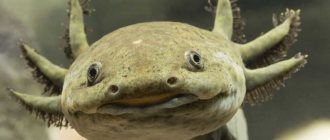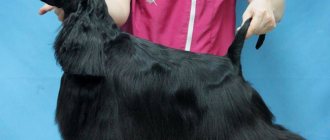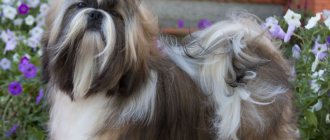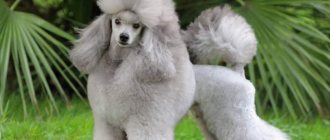- Wild animals
- >>
- Amphibians
The axolotl is an amazing, very unusual species of living creatures.
Another name is aquarium dragon. This is due to the fact that cunning, dexterity and agility of animals are often bred as aquarium inhabitants. They represent the larval stage of development of tailed amphibians. Today they are a rather rare species that is threatened with complete extinction. It was this type of living creatures that inspired cartoonists to create cute and bright images of dragons, which they closely resemble in reality.
Origin of the species and description
Photo: Axolotl
The axolotl is considered a chordate amphibian. It is a representative of the order of tailed amphibians, the Ambystoma family, and the genus of axolotls. This animal belongs to the Mexican Ambystoma species. This species, as well as any other species of ambystome, are amazing creatures characterized by neoteny. Translated from ancient Greek, this unique ability is interpreted as “endless youth.”
The incredible ability of axolotls lies in the ability to exist throughout their lives as a larva without ever turning into an adult form. They are not characterized by metamorphosis. This is due to the specific structure of the thyroid gland. It practically does not synthesize iodine, which acts as an activator of metamorphosis.
Axolotl video:
Scientists and researchers still cannot come to a consensus and formulate a hypothesis about the origin and evolution of aquatic dinosaurs. It is known that the name of these amphibians was borrowed from the ancient Greeks, or rather from the Aztecs, who called these dragonets “water dogs.”
According to the legend of the ancient Aztecs, there once existed an eternally young and beautiful God of weather on earth. His name was Xolotl. He was characterized by cunning, intelligence, dexterity and deceit. And so the people, who in those distant times existed side by side with the Gods, got tired of his resourcefulness and deceit and decided to teach him a lesson. However, God Xolotl was much more cunning than people. He turned into an axolotl and hid from his ill-wishers in the depths of the sea.
According to research, scientists suggest that this form of living beings inhabited the earth more than 10 million years ago. Today, only two species are found in natural conditions: tiger and Mexican ambystoma, as well as two forms: neotenic, or larval, and terrestrial, sexually mature adult.
Habitat in nature
Translated from the ancient Aztec language, axolotl means water monster. The homeland of axolotls is the ancient system of water canals and lakes in Mexico City. They live their entire lives in the water, never moving onto land. They prefer deep places in canals and lakes, with abundant aquatic vegetation, as they depend on aquatic plants. They live in Lakes Xochimilco and Chalco in Mexico, however, as a result of rapid urbanization, their range is shrinking. Lake Chalco no longer exists, having been drained as a result of flood control measures, and Lake Xochimilco remains a shadow of its former self, existing as canals.
As of 2010, wild axolotls were close to extinction due to urbanization in Mexico City and subsequent water pollution, as well as the introduction of invasive species such as tilapia and snapper. These new fish ate baby axolotls and also became competitors in the food poverty.
They are listed as critically endangered in the wild, with declining populations. Axolotls were also sold as food in Mexican markets and before the Spanish invasion, they were eaten by the Aztecs, the meat was considered medicinal, and the taste was similar to eel.
Fortunately, they reproduce quite easily in captivity, and are also of scientific value due to their ability to regenerate gills, tails and even limbs. The study of this feature has led to the fact that there are quite a lot of them in captivity, and many color forms have been bred.
Their habitat is similar to that of most neotenic species—a high-altitude body of water surrounded by a hazardous terrestrial environment. The axolotl is carnivorous, consuming small prey such as worms, insects and small fish in the wild. Axolotls find food by smell and "attack" any potential food by sucking the food into their stomachs using a vacuum.
During the breeding process, they attach eggs to aquatic plants and then fertilize them. Lake Xochimilco is famous for its floating gardens or chinampas, essentially strips of land between canals where locals grow vegetables and flowers. Axolotls live in this ancient system of irrigation canals and lakes.
Axolotls are listed in the Red Book as a species of amphibian under threat of extinction. Since their habitat is 10 square kilometers, and also very scattered, it is difficult to establish the exact number of individuals living in nature.
Appearance and features
Photo: Home axolotl
Axolotl is the larval form of any Ambystoma. They are divided into two species, since these species are distinguished by the greatest ability for neoteny. The external characteristics of the axolotl make it look like a kind of toy, an animated dinosaur of reduced size. The salamander has a huge head relative to its body. On both sides there are three hair-covered antennas. These are the external gills. They can be either pressed to the body or raised.
Interesting fact: These amphibians have a unique structure of the respiratory system. They have lungs, like internal respiratory organs, and gills, like external ones. This allows them to feel comfortable both on land and in water.
The body is elongated, there are limbs and a tail. The skeleton will be replaced by cartilage tissue. It is especially tender and soft in young individuals. The head part is widened and rounded. A wide, flat mouth creates the feeling of a permanent smile. The oral cavity contains many small and sharp teeth. They perform the function of fixing caught prey. They are not suitable for chewing or separating food. There are small, round, black eyes on the head.
The body of the little newt is streamlined, smooth, elongated and slightly flattened. In the back area there is a longitudinal ridge that acts as a fin. There are also transverse stripes that give the appearance of a ringed body. There are two pairs of limbs. The front ones are four-toed, and the back ones are five-toed. The tail of a water dragon is very long. In total, it forms about five dozen cartilaginous vertebrae with the body. The tail part is highly mobile. This ability allows amphibians to move quickly in water.
The length of the axolotl's body is from 15 to 40 centimeters. The volume of the body is 13-20 centimeters, the weight of one individual does not exceed 350 grams. Sexual dimorphism is not very pronounced. Females are somewhat lighter and smaller than males, and also have a shorter tail. The color of a water dragon can be very diverse: brown, gray, green, and can have all sorts of patterns of various sizes on its body. Also, a salamander can have a light color with various markings on it, or completely white without patterns or markings of a different color.
Photo
CULLED FROG: CONTENT, CARE, BREEDING, COMPATIBILITY, PHOTO.
AQUARIUM FROGS: CONTENT, CARE, COMPATIBILITY, BREEDING, DESCRIPTION.
AQUARIUM NEWTS: CARE, CONTENTS, DESCRIPTION, REPRODUCE, PHOTO, VIDEO.
Where does the axolotl live?
Photo: Amphibian axolotl
In natural conditions it is extremely rare. Mainly lives in the waters of the Mexican lakes Cholco and Xochimailco. They are located in Mexico City at an altitude of almost two thousand meters above sea level. In the region of the so-called floating islands there are the most optimal living and breeding conditions for water dragons.
Since the second half of the 19th century, collectors began to actively breed these amphibians at home. They are kept in captivity exclusively in aquarium conditions. Its size is selected based on the number of individuals. If small newts are of different ages, it is better to keep them separately, since stronger individuals will start fights and oppress, taking food from weaker ones. On average, young water dragons need to be kept in conditions with a volume of fifty liters for each. Subsequently, when they grow up, it is necessary to provide such space for each of them.
A person who decides to keep a salamander at home must equip the aquarium in such a way as to create conditions as close as possible to natural ones. It is imperative to ensure the presence of houses or shelters, and line the bottom with soil, without which the axolotl cannot exist. He also needs natural light. When choosing soil, it is better not to use sand or small stones. It is better to give preference to pebbles that the amphibian cannot swallow.
If several water dragons live in an aquarium, it is necessary to equip such a number of houses and shelter so that each of them can choose.
What can be used as shelters:
- Pots;
- Stone boulders;
- Wooden driftwood;
- Artificial ceramic, clay houses;
- Cracked coconuts.
It is necessary to take into account that it is better to place the aquarium away from the source of noise, as well as a computer, TV, and bright artificial light. The optimal water temperature should be ensured. The most suitable option is 13-18 degrees. Water that warms up to 20 degrees or higher can cause serious illness and even death of the salamander.
Little tricks
For the axolotl, the purity of the water and its oxygen saturation are important, so the aquarium must be equipped with a compressor and cleaned at least once a week. The optimal water temperature is 15-20o. But the flow of larvae is annoying, so the compressor should not be too strong
nym. Axolotls do not like bright light, so it would be good to create shaded areas in the aquarium. As neighbors for them, it is better to select fish that are not small and not too lively - golden ones are great, but not veil ones.
An abrupt replacement of old water with fresh water, especially cold water, is a stimulus for axolotls to reproduce. From the eggs laid by the female on aquatic plants, after a couple of weeks of being kept in a separate container with water, larvae develop, which are fed with food for fish fry.
And lastly: if your axolotl suddenly changed its color and body shape and “threw back” its gills, it means that it has turned into an ambistoma. This happens when the water level drops significantly or when the special hormone thyroidin gets into the food. There is nothing wrong with this, it’s just that you will now have a different pet living with you.
What does axolotl eat?
Photo: Axolotl at home
Young amphibians use small mollusks, crustaceans and other ciliates as a food source.
Mature individuals happily eat:
- larvae;
- earthworms;
- snails;
- cyclops;
- dophnium;
- crickets;
- mussels;
- bloodworm;
- paramecium;
- meat;
- fish.
Important information. When kept in aquarium conditions, it is not recommended to feed water dragons with amphibian meat. This product contains a large amount of protein, which is not absorbed by the axolotl’s digestive system.
You can use types of food that are intended for predator fish. In aquarium conditions, this is the most acceptable option, since it is not advisable to simply throw insects into the water for predators, because they need an imitation of hunting. Ready-made food has the ability to slowly sink to the bottom. Thanks to this, the water dragon has time to absorb it before sinking to the bottom. If you prefer to feed them non-living insects, it is better to do this with tweezers, since the axolotl uses its jaws only to fix a food source that is moving.
If food falls to the bottom of the aquarium and the amphibians do not have time to eat it, it must be removed immediately so that it does not pollute the aquarium or spoil the quality of the water.
The main source of food in natural conditions is zooplankton, small fish, and insects that live in the aquatic environment. It can easily feed on the limbs or other parts of the body of its fellows. To get them, the axolotl hunts. It chooses a secluded place for an ambush, catches the direction and rhythm of water flows, and when a potential victim approaches, makes a sharp lunge in its direction and grabs it with its wide open mouth.
These amphibians do not chew, so they swallow food completely. The process of digesting food takes several days. In the absence of a food source, water dragons can easily exist without food for several weeks, and still feel quite comfortable.
Feeding
What does axolotl eat? It is enough to simply feed, since axolotls are predators and prefer animal food. The size and type of food depends on the individual, for example, they eat well sinking food for predatory fish, available in the form of granules or tablets.
In addition, the owners provide pieces of fish fillet, shrimp meat, chopped worms, mussel meat, frozen food, and live fish. True, the latter should be avoided, as they can carry diseases, and axolotls are very predisposed to them.
The feeding rules are the same as for fish - you cannot overfeed and leave waste in the aquarium, as such food immediately rots and instantly spoils the water.
Mammalian meat cannot be used as food, since the axolotl’s stomach cannot digest the protein contained in it.
Features of character and lifestyle
Photo: Axolotl animal
The axolotl prefers to stay in clean water. It is in such water that they breathe mainly through gills. On land or in polluted water, the lungs are involved in breathing, and the gills partially stop performing their function and may atrophy. When exposed to favorable living conditions, the gills grow back and can once again perform their functions.
Under natural conditions, they prefer a hidden, solitary lifestyle. They are most active at night.
Amphibians are calm and leisurely, although they can move quite quickly in the water surface, raking with their forelimbs. During the hunt, they always choose a very advantageous position, since the salamander’s eyes are designed in such a way that they do not see anything below the level of their body.
Sometimes they can simply hang in the water, following the current, slightly moving their paws. The long tail plays an important role in maintaining balance and direction of movement.
Interesting fact. Nature has awarded water dragons with the amazing ability to regenerate not only cells and tissues, but also lost tails, limbs and even internal organs!
This amazing ability has aroused keen interest among researchers. The axolotl was caught in huge numbers for research and numerous laboratory experiments. This ability also allows you to quickly recover from fights, during which animals tear off each other’s limbs and tails and cause serious damage.
Compatibility
The best way to keep an axolotl is separately from any other inhabitants. Since these are predatory creatures, they will easily destroy small and peace-loving fish. And predators and large species can destroy the water dragons themselves - their skin and corolla of gills are very fragile and delicate.
In addition, axolotls are nocturnal predators and their lifestyle does not coincide with aquarium fish.
The only exception is, perhaps, goldfish. They are slow and non-aggressive and have the same temperature regime as axolotls. In this case, it is only important to feed all pets well. Other species of fish, frogs, mollusks, and reptiles will not be able to get along with these creatures.
Social structure and reproduction
Photo: Mexican axolotl
The water dragon reproduces well in natural conditions and in captivity in an aquarium. The breeding season has a seasonal relationship. Offspring are hatched in spring and autumn. Individuals of different sexes who are about to enter into mating relations organize real mating games with the onset of darkness. After this, the male deposits spermatophotes in the ground. Then the female collects them and lays unfertilized eggs on them, or draws them in with the cloaca. A day later, she lays the fertilized eggs on various aquatic vegetation or artificial objects in the aquarium.
The beginning of the breeding season in natural conditions is a decrease in water temperature.
Two to three weeks after the fertilized eggs are laid, small, barely noticeable fry hatch. Externally, they resemble tadpoles, or small fish. Their size does not exceed the size of a small pea. Their length does not exceed one and a half centimeters, there are no paws. Limbs do not grow at the same time. The front legs appear only after 90 days, the hind legs after a week. When kept in artificial conditions, the fry need to change the water daily, filter it, and feed it with small larvae, bloodworms, and small worms.
The period of puberty begins after reaching ten to eleven months. They produce offspring best when they are two to three years old. Individuals older than five years reproduce much worse. The average life expectancy in natural conditions is 13-14 years. With good care in captivity, life expectancy almost doubles.
Basic aquarium parameters
The size of axolotls is quite impressive, so the recommended minimum aquarium volume is about 60-80 liters. In this case, the aquarium does not have to be full: the water level should be higher than the length of your pet. It is advisable to use a filter - otherwise frequent water changes are necessary. The filter should not create a strong current. It is necessary to regulate the power of the device so as not to damage the axolotl’s gills.
A siphon should be used to remove food residues from the bottom. A weekly 20% water change is also necessary. In aquariums without a filter, replacements of the same volume are necessary daily or every other day. A complete water change is unacceptable, as this can lead to a total imbalance in the aquarium. Tap water usually contains chlorine compounds. They can be neutralized using special preparations for aquarium water on the market. Optimal pH values are 6.5-7.5.
Natural enemies of axolotls
Photo: Amphibian axolotl
Many reasons contributed to the decline in axolotl numbers. One of them is the destruction of natural habitats and pollution of water sources. Changing climatic conditions, warming and rising water temperatures cause death and numerous diseases of amphibians.
The second significant reason for the decline in numbers is diseases, to which salamanders are very susceptible. They tend to suffer from very serious diseases that cause death: ascites, anorexia, metabolic disorders, hypovitamnosis, intestinal obstruction, digestive disorders, etc.
Humans played a major role in the status of the population. Amphibians were caught in huge quantities for the purpose of conducting experiments and research on the regeneration of lost organs and limbs. In addition, human activity contributes to the pollution of natural water bodies. Crystal clear lake water becomes dirty. This leads to sickness and death of water dragons, as they react very strongly to water quality.
In addition, larger and more predatory fish hunted axolotls: telapia, carp. They eat large quantities of not only the amphibians themselves, but also their eggs, which thus do not have time to turn into fry.
Aquarium Basics
Keeping an axolotl as a pet aquarium is quite difficult. He needs strictly defined conditions of detention:
- The water temperature should be within +13…+20 °C. Exceeding these limits usually leads to the death of the pet. It is especially difficult to maintain this regime in the summer. A water thermometer is required.
- It is best to keep each individual in a separate aquaterrarium, since cases of cannibalism are not uncommon among these creatures. Only specimens of the same age and size, equal in strength and endurance, can be kept together.
- To prevent individuals from attacking each other, it is necessary to ensure that they are always well-fed.
- Each individual will require a small tank with water in the amount of 20-40 liters and low hardness levels or neutral.
- The water must be well settled and free of chlorine. The filter is chosen to be internal, weak, so as not to create a powerful flow. Add clean water little by little as it dries out. It is enough to completely change it 2-3 times a year. At the same time, dirt and food debris must be removed regularly.
- No lighting required. These creatures prefer twilight. The aquarium should be installed in a quiet and peaceful place. Even noise from a computer will disturb these pets.
- The aquaterrarium must be properly equipped. At the bottom there should be soil consisting of large pebbles or soft stones so that the axolotl can hold on to them with his fingers. In addition, the fraction size is chosen in such a way as to prevent accidental ingestion of the bottom filler by water dragons.
- Covers must be provided at the bottom of the tank. They can be beautifully decorated and created from driftwood, ceramic pots, amphorae, houses, arches, coconut shells, and large stones.
- Pets should not be picked up or the person's fingers and palms should be very cold to eliminate thermal burns on the axolotl's delicate skin.
- When jigging an axolotl, it is better to use a soft cloth net and act very carefully, because they are boneless creatures.
- Be sure to check the water temperature several times a day. If it exceeds +21 °C, then it is urgently necessary to cool it. This can be done by placing a plastic bottle filled with ice into the reservoir. It is better to have several of them in the freezer compartment of the refrigerator.
- On very hot days, it is recommended to move the aquaterrarium to a dark, cool room, for example, a basement, cellar.
Population and species status
Photo: Axolotl
Today, the axolotl is practically never found in nature, in its natural habitat. On the territory of the Russian Federation it is found exclusively in aquarium conditions. Previously, the habitat of amphibians was quite wide. Then, as the number of axolotls declined, their natural habitat area also decreased. Today they are not found anywhere except two Mexican lakes.
Researchers from the Autonomous University of Mexico made calculations and found that there are no more than 800 - 1300 left in nature. The exact number is unknown. This means that if special programs are not developed to save and preserve the species, it may completely disappear. However, researchers claim that several hundred thousand successfully live and reproduce in artificially created conditions within the aquarium.
Over the past ten years, the number of water dragons in their natural habitat has decreased significantly. Researchers say that in 1998, there were just over five thousand individuals for every square kilometer of Mexican lakes. In 2003, the same area accounted for no more than a thousand individuals. In 2008, the same area accounted for no more than a hundred individuals. Thus, the population has decreased by more than 50 times in just ten years.
Coloring
The choice of color forms in axolotls is impressive. In nature, they are typically dark brown with gray or black spots. But there are also light color forms, with various dark spots on the body.
The most popular among fans are albinos, which come in two colors - white and gold. The white one is an albino with red eyes, and the golden axolotl is similar to him, only there are golden spots on the body.
In fact, there are a lot of different options, and new ones are constantly appearing. For example, scientists recently bred a gene-modified axolotl with green fluorescent protein. Such pigments glow fluorescently under special lamps.











